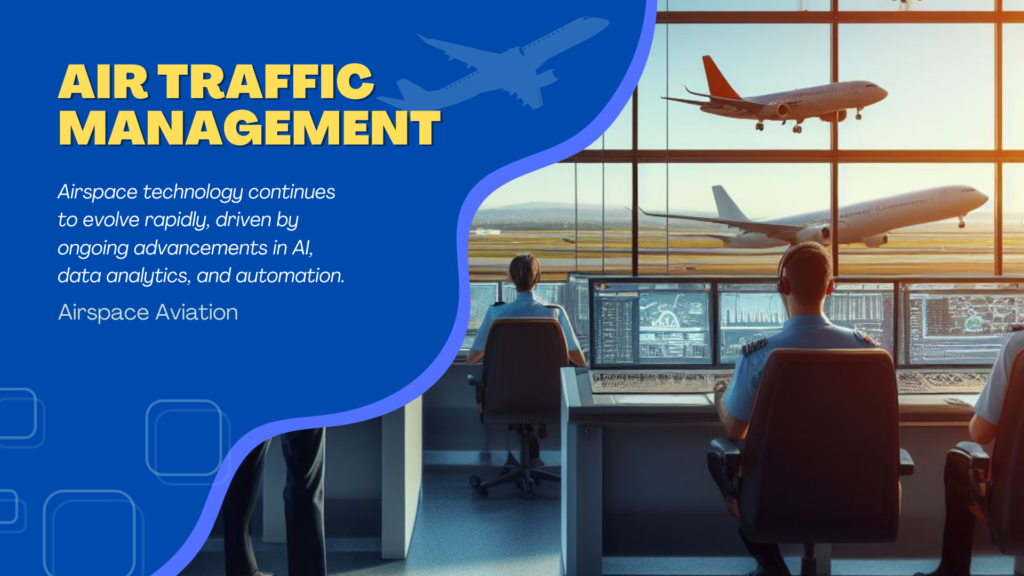How Airspace Technology is Transforming Air Traffic Management
Transforming the Skies: Airspace Technology and its Impact on Air Traffic Management
Air traffic management (ATM) stands at the core of aviation operations, orchestrating the movement of countless aircraft worldwide. In recent years, an unprecedented transformation has been underway, driven by the integration of advanced airspace technology. This article explores how this technology is reshaping air traffic management and how aviation software management, particularly from the perspective of airspace.ae, is playing a pivotal role in this revolution.
The Evolution of Air Traffic Management
Traditionally, air traffic management involved human operators relying on radio communications and manual tracking systems. However, the surge in air travel necessitated a more efficient and technology-driven approach to handle the growing complexity of the skies. Enter airspace technology, a confluence of cutting-edge hardware and software that has redefined how air traffic is monitored, managed, and controlled.
Key Components of Airspace Technology
1. Radar and ADS-B Systems:
Advanced radar systems and Automatic Dependent Surveillance-Broadcast (ADS-B) have significantly improved aircraft tracking. ADS-B, in particular, enhances surveillance accuracy and data sharing, providing real-time updates on an aircraft’s position and velocity.
2. Data Analytics and AI:
Data analytics and AI algorithms process vast amounts of flight data to predict traffic patterns, optimize routes, and enhance overall airspace efficiency. Machine learning models can forecast air traffic, aiding in proactive decision-making.
3. Automation and Decision Support Systems:
Automation streamlines routine tasks and supports decision-making by providing real-time insights. This helps air traffic controllers manage traffic flow, reduce delays, and enhance safety.
Airspace Technology and Aviation Software Management
1. Efficient Flight Planning:
Aviation software management, exemplified by airspace.ae, integrates advanced flight planning modules. These modules optimize routes, considering real-time weather, air traffic, and fuel efficiency, resulting in streamlined flight paths.
2. Enhanced Communication:
Modern aviation software facilitates seamless communication between pilots, air traffic controllers, and ground staff. This ensures a synchronized flow of information critical for smooth air traffic operations.
3. Predictive Maintenance:
Aviation software incorporates predictive maintenance algorithms, which enhance safety by forecasting potential maintenance needs, optimizing schedules, and minimizing aircraft downtime.
Benefits of Airspace Technology in Air Traffic Management
1. Safety Improvements:
Advanced airspace technology enhances safety through improved surveillance, predictive analysis, and automated safety alerts, minimizing the risk of collisions and incidents.
2. Enhanced Efficiency:
Airspace technology optimizes air traffic flow, reducing congestion and delays, ultimately leading to enhanced efficiency, cost savings, and reduced fuel consumption.
3. Environmental Sustainability:
By optimizing routes and reducing fuel consumption, airspace technology contributes to the aviation industry’s efforts towards environmental sustainability by minimizing carbon footprints.
The Future of Air Traffic Management
Airspace technology continues to evolve rapidly, driven by ongoing advancements in AI, data analytics, and automation. As it does, the future of air traffic management holds promise for even greater safety, efficiency, and sustainability. Airspace.ae, at the forefront of aviation software management, is poised to play a vital role in this evolution, ensuring that airspace technology is seamlessly integrated into the fabric of modern air travel.
In conclusion, airspace technology is a game-changer, redefining how we perceive and manage air traffic. With the right integration and management through aviation software solutions like those from airspace.ae, the skies are bound to become safer, more efficient, and technologically sophisticated, heralding a new era of aviation.

Read article –
Exploring the Majesty of Dubai’s Airspace
#AirspaceDubai #AirspaceAviation #AerospaceDubai #Dubaiairspace #Dubai #Airspace #Aviation #IndustryLeadership #airspaceAviation #AviationInnovation #AviationTechnology #Technology #AI #IoT #BigData #AirTrafficManagement #PredictiveMaintenance #DecisionMaking #GeographicLocation #GlobalHubs #AviationInfrastructure #SustainableAviation #EcoFriendly #Partnerships #Collaborations #EconomicGrowth #Diversification #Tourism #Finance #Trade #Aerospace #Leadership #AirTrafficControl #SustainabilityInitiatives #Innovations #FutureofAviation #AviationEcosystem #CuttingEdgeTechnologies #AviationHub #StrategicVision #Infrastructure #Efficiency #SmartAviation #GreenAviation #AviationTrends #GlobalAmbitions #technology in Dubai aviation #airspace technology #Dubai Air Navigation Services (DANS) #Dubai Air Engineering (DAE) #Dubai Airports #air traffic control #aircraft maintenance #passenger processing #sustainability #artificial intelligence (AI) #blockchain #autonomous aircraft #DubaiAviation #AirspaceTechnology #DANS #DAE #DubaiAirports #AirTrafficControl #AircraftMaintenance #PassengerProcessing #Sustainability #AI #Blockchain #AutonomousAircraft #air traffic management #aircraft maintenance engineering #facial recognition #solar energy #electric vehicles #free routing #augmented reality #supply chain management #data security #air transport

